 |
|
Artemis 1 (Space Launch System) 16 November 2022 |
Launch Complex 39B Kennedy Space Center |
| NASA launched the Artemis 1 flight test at 1:47 a.m. on 16 November 2022 from Launch Complex 39B at Kennedy Space Center. Artemis I is the first integrated flight test of NASA’s deep space exploration systems: the Orion spacecraft, the Space Launch System (SLS) rocket, and the supporting ground systems at NASA’s Kennedy Space Center. Assuming all goes well during this flight, Artemis 2 and beyond will start carrying astronaut crews on missions to the Moon. | |
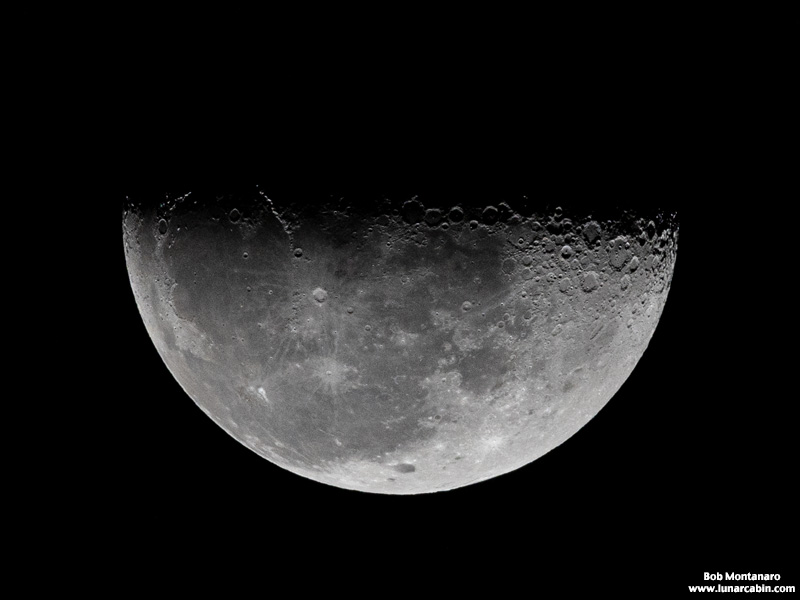 |
|
| The destination for Artemis 1 and future Artemis missions is the Moon, which rose into the sky prior to launch. | |
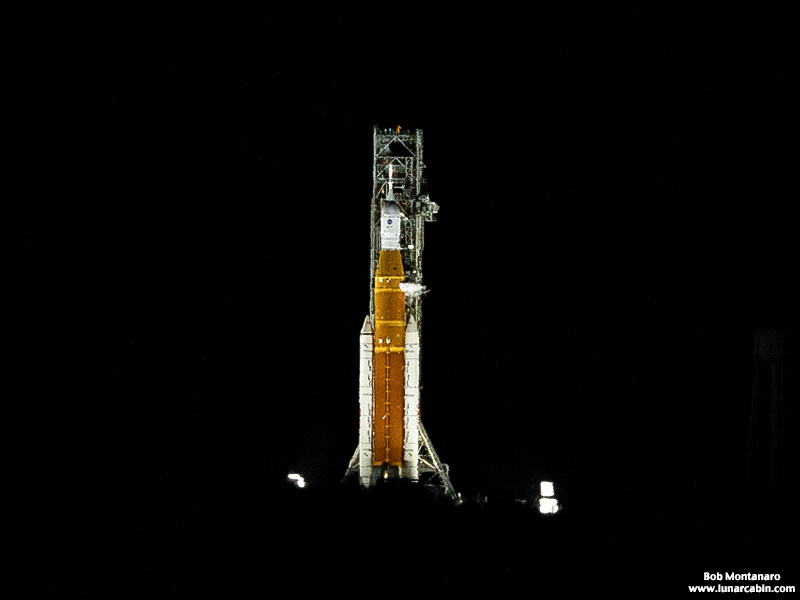 |
|
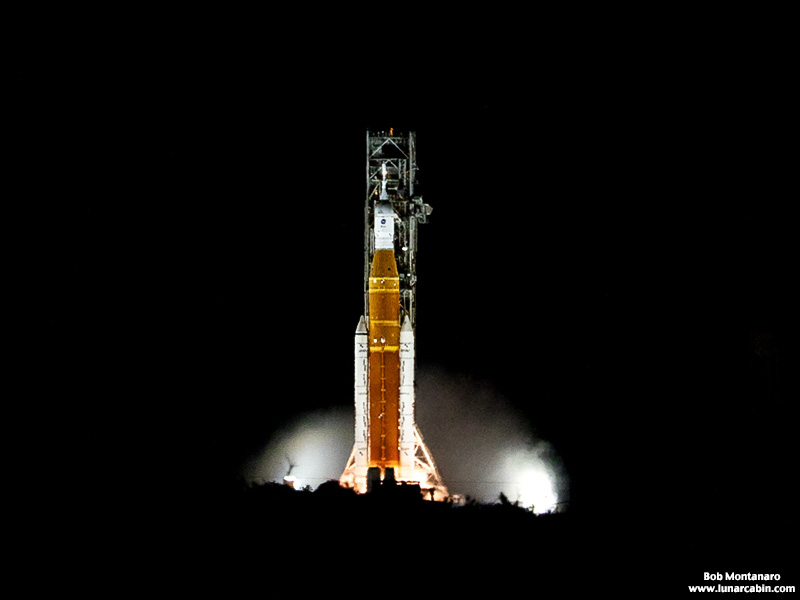 |
|
Ignition! |
|
 |
|
Liftoff! |
|
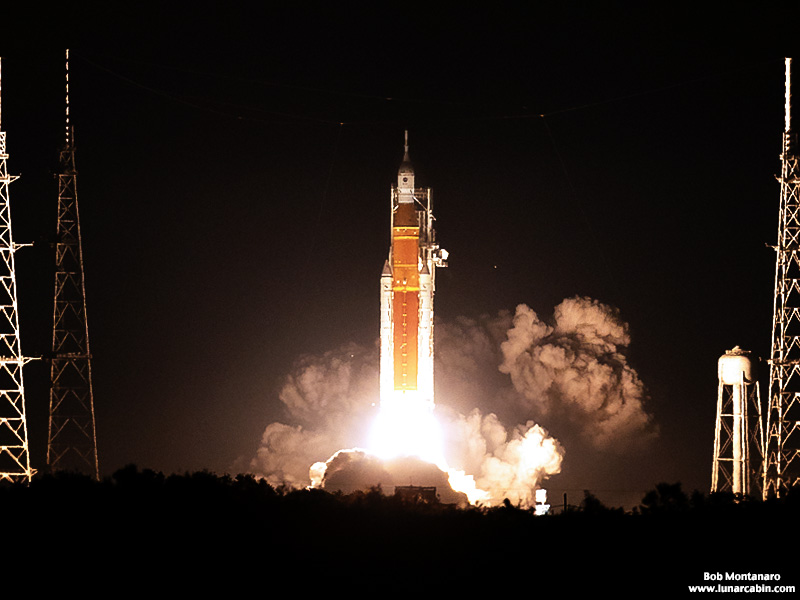 |
|
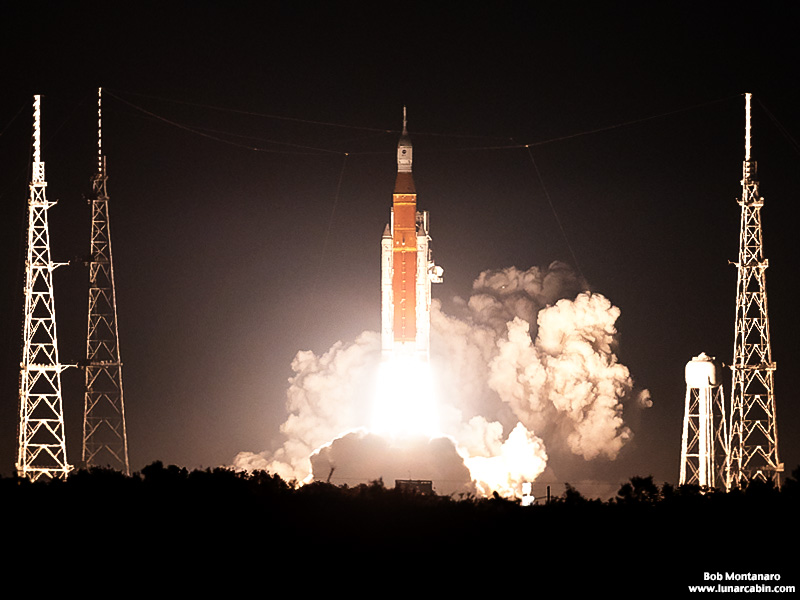 |
|
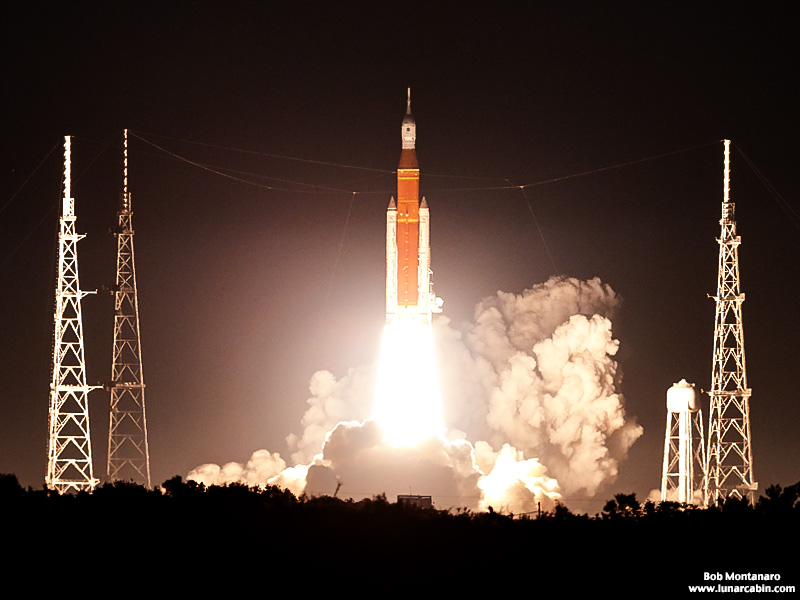 |
|
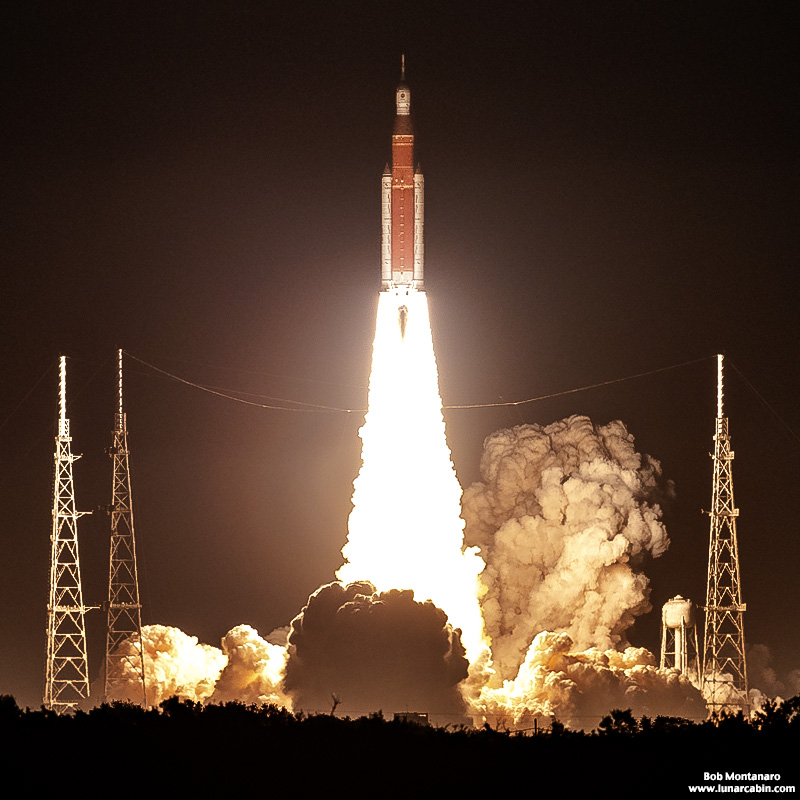 |
|
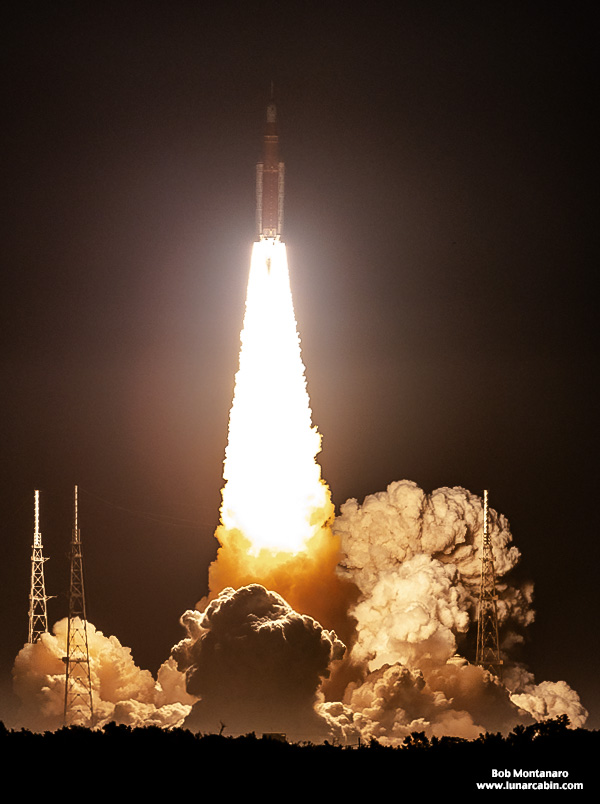 |
|
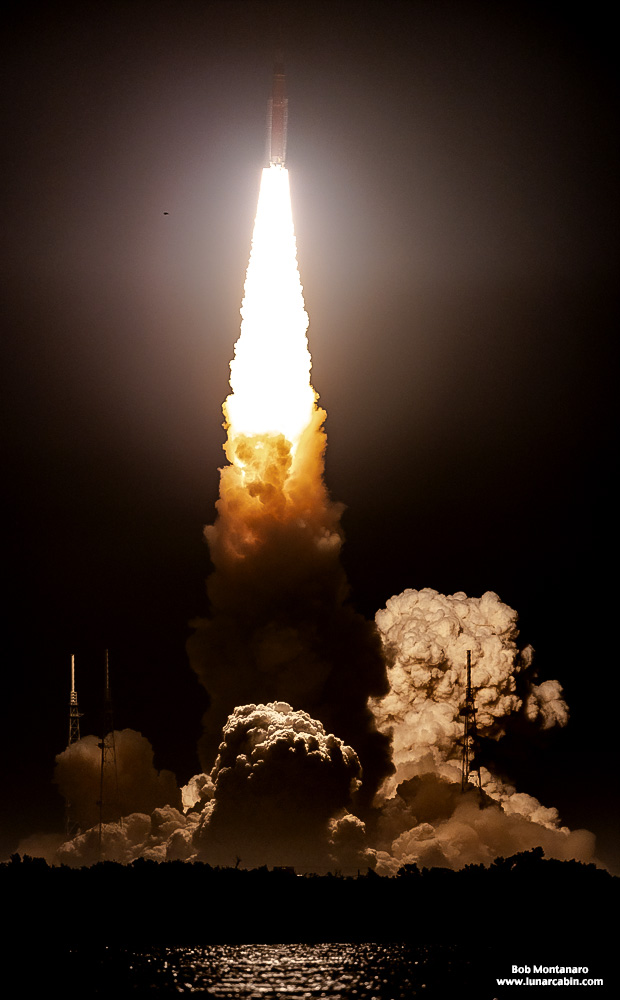 |
|
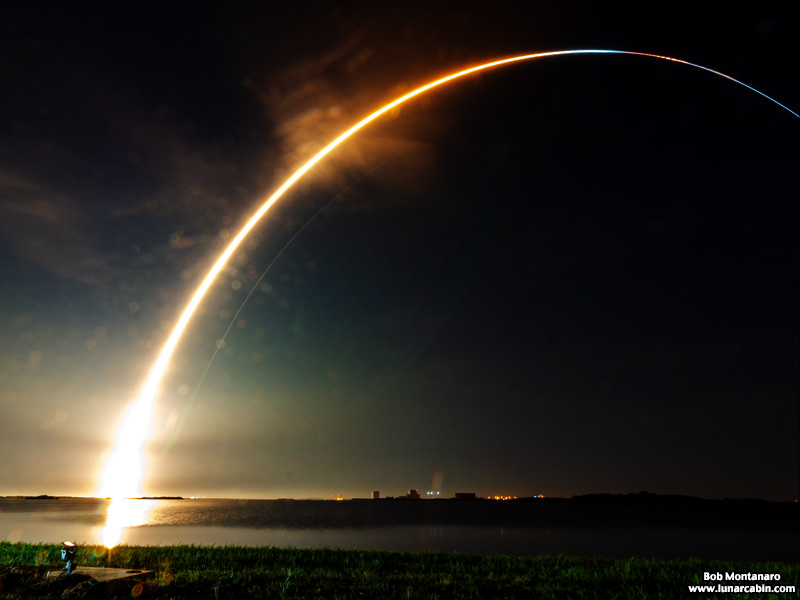 |
|
The streak shot was blown out due to the unexpected brightness of the solid rocket booster flames. |
|
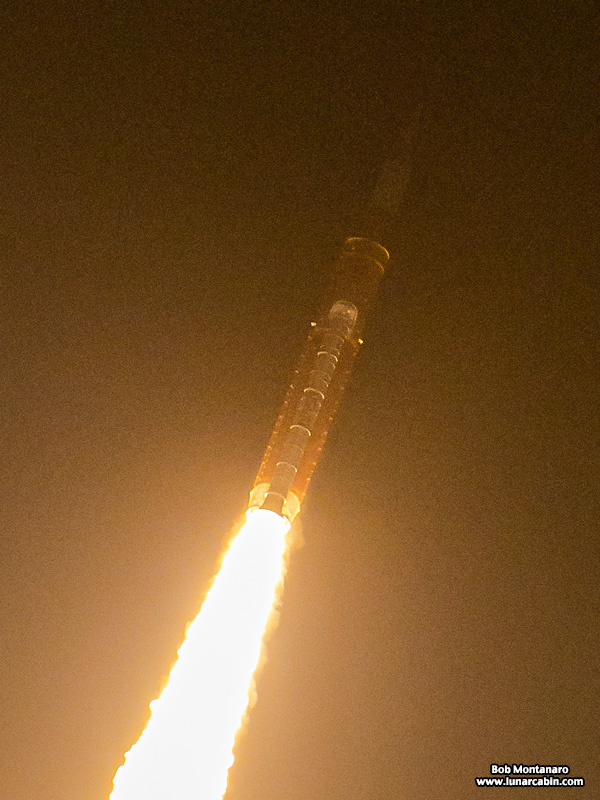 |
|
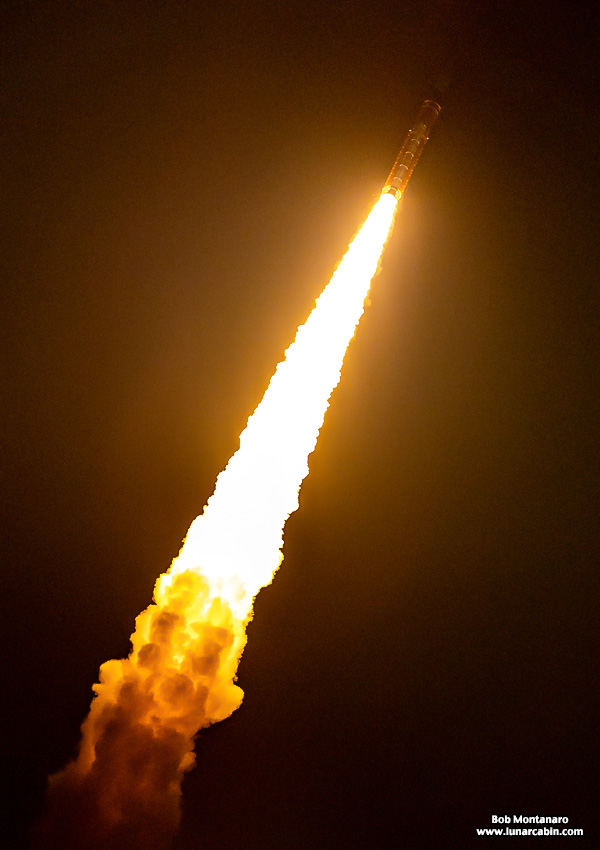 |
|
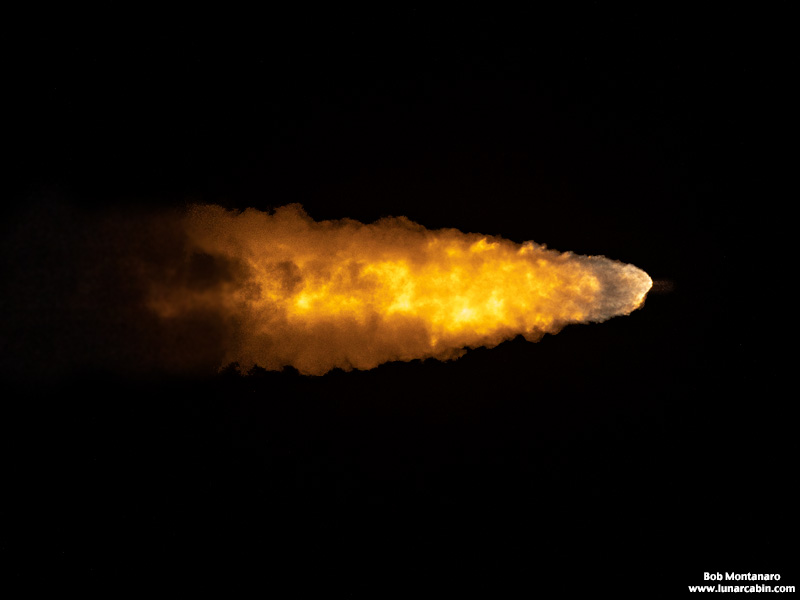 |
|
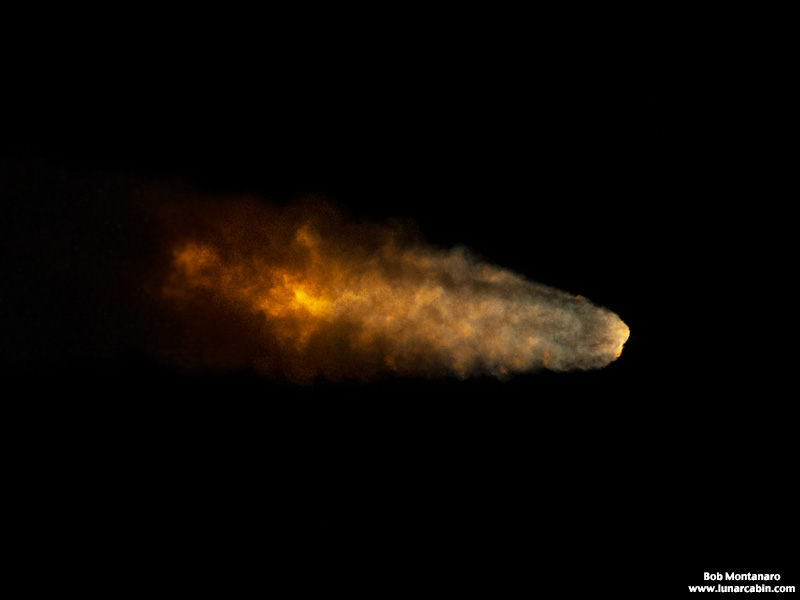 |
|
 |
|
The solid rocket boosters begin to tail off prior to separation. |
|
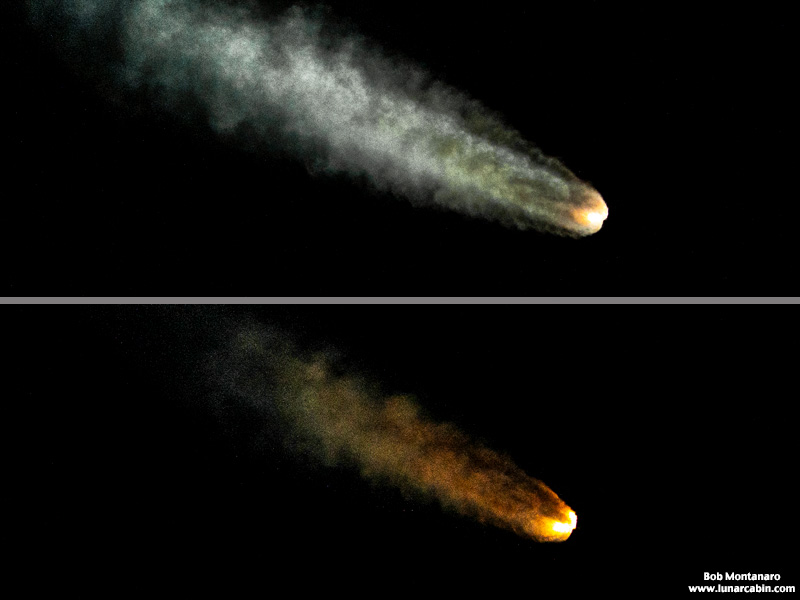 |
|
 |
|
Separation of the solid rocket boosters. |
|
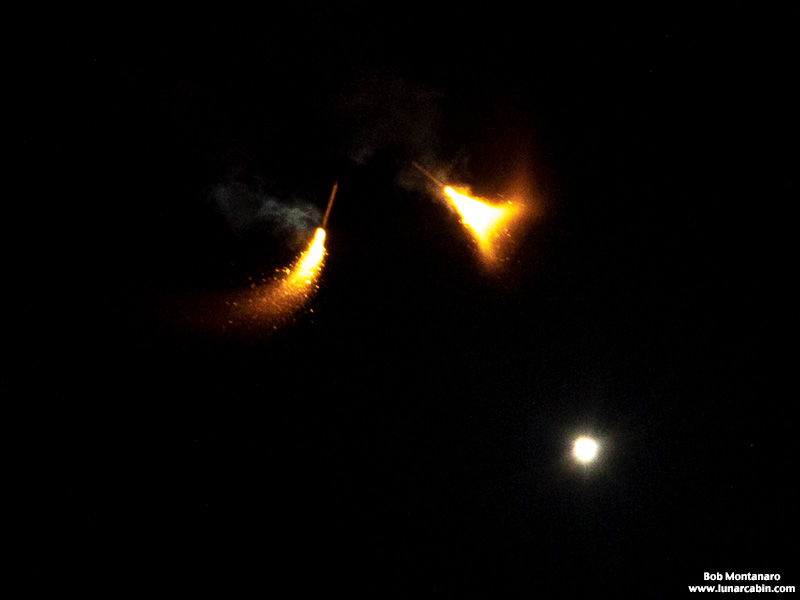 |
|
| The boosters spew flames & burning fuel particles as they begin their uncontrolled descent to the Atlantic Ocean. The boosters are not recovered. The Core Stage continues on powered by its four engines on its way to orbit. | |
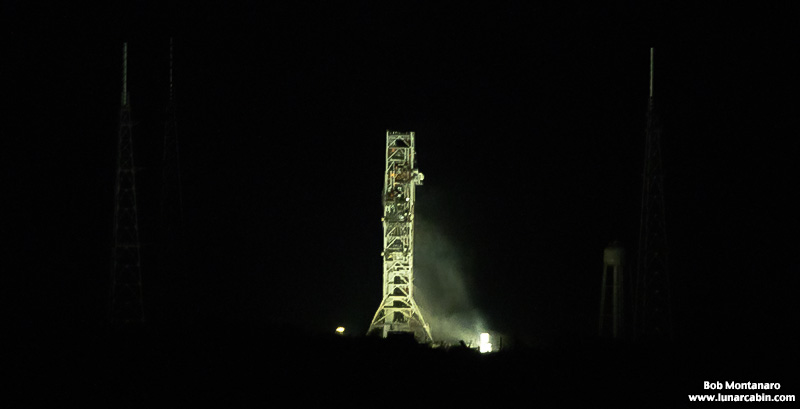 |
|
EXCERPT FROM NASA'S ARTEMIS 1 REFERENCE GUIDE |
|
Artemis 1 will be the first integrated flight test of NASA’s deep space exploration systems: the Orion spacecraft, the Space Launch System (SLS) rocket, and the supporting ground systems at NASA’s Kennedy Space Center in Florida. The first in a series of increasingly complex missions, Artemis I will provide a foundation for human deep space exploration and demonstrate our commitment and capability to extend human presence to the Moon and beyond. The primary goal of Artemis I is to thoroughly test the integrated systems before crewed missions by launching Orion atop the SLS rocket, operating the spacecraft in a deep space environment, testing Orion’s heat shield, and recovering the crew module after reentry, descent, and splashdown. The SLS rocket will launch an uncrewed Orion spacecraft from Launch Complex 39B at NASA’s modernized spaceport at Kennedy. As the Orion spacecraft orbits Earth, it will deploy its solar arrays, and the interim cryogenic propulsion stage (ICPS) will give Orion the big push — called a trans-lunar injection — needed to leave Earth’s orbit and travel toward the Moon. From there, Orion will separate from the ICPS about two hours after launch. After Orion separates from the ICPS, 10 small satellites known as CubeSats will be deployed to perform experiments and technology demonstrations. The CubeSats will conduct a range of investigations and technology demonstrations from studying the Moon or an asteroid to the deep space radiation environment. Each CubeSat provides its own propulsion and navigation to get to various deep space destinations. Orion will continue on a path toward a lunar distant retrograde orbit, where it will travel about 40,000 miles beyond the Moon, or a total of about 280,000 miles from Earth, before returning home. This flight test will demonstrate the performance of the SLS rocket on its maiden flight and gather engineering data throughout the journey before Orion returns on a high-speed Earth reentry at speeds of more than 25,000 mph. The high-speed lunar velocity reentry is the top mission priority and a necessary test of Orion’s heat shield performance as it enters Earth’s atmosphere, heating to nearly 5,000 degrees Fahrenheit (2,760 degrees Celsius)—about half as hot as the surface of the Sun—before splashing down in the Pacific Ocean for retrieval and post-flight engineering assessment. |
|
All contents copyright Lunar Cabin |
|